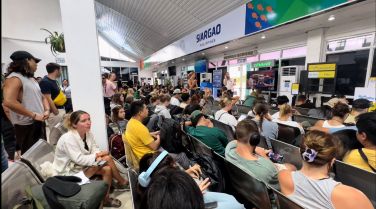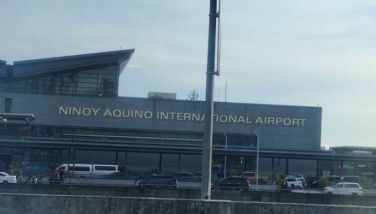Why Subic? Analyst lists 6 gains from the AFP move
MANILA, Philippines - The impending Subic Bay transfer of the Philippine Air Force and Philippine Navy has been said to be the cost efficient and strategic option for the country's armed forces.
Defense Secretary Voltaire Gazmin has said that as soon as the funds are available, the camp will make the move to protect the disputes territories in the South China Sea.
Others, particularly the Beijing-based press, criticized the move as an attempt to increase pressure on rival claimant China over the contested areas.
Related: Manila to move air force, navy near disputed sea
Australia-based security consultant Max Montero sees several advantages to the relocation, which he called a strategic move with a "civilian face."
1. Decongestion of the Ninoy Aquino International Airport (NAIA)

An aerial view of Subic Bay International Airport. (Travel to the Philippines photo)
The country's main international gateway has been overcapacity for several years and efforts to decongest the airport has been started by the Civil Aviation Authority by banning light aircrafts from its runways.
The smaller planes have been advised to transfer to Sangley Point in Cavite, from where the Air Force's 15th Strike Wing may eventually also transfer.
The Clark International Airport can also increase civilian traffic by taking on some of NAIA's, while the Air Force can transfer to Subic Bay International Airport (SIA).
"SIA is the better choice due to its wider area and more room for improvement," Montero said in a statement.
2. Subic Bay makes a "fine naval base"

Subic as the US' naval base in 1992. (US Navy Museum photo)
"As early as the 19th century the Spaniards found Subic Bay's strategic location, deep water and sheltered anchorages," Montero said, adding that the shoreline can replace the Cavite Naval Base.
The Americans knew this fact and chose the area to become their own satellite naval base during the Cold War, and now the Navy can use the space for newly acquired war vessels.
"The (Subic Bay Freeport Zone) is also home to several shipbuilding and repair facilities, oil depots, and has been the home of the BRP Gregorio del Pilar since it was acquired in 2011," he said.
The Navy announced it is still planning to purchase more vessels to boost maritime surveillance in the near future.
3. Subic is nearer the disputed isles
Basa Airbase is the nearest to the contested territories but it is the Subic Airport that allows quicker air defense response by giving jets a better grappling position, so to speak.
"Subic Airport beats Basa Airbase in closing the distance by a mere 20 something kilometers ... it would cut the reaction time of responding fighter planes by at least three minutes," Montero said.
Consequently, naval vessels will be closer to the areas where conflict could set off.
4. Olongapo is military support community

The USS Harper Ferry docked at Subic. (Boviate photo)
Since Olongapo City has hosted American troops in the past, residents are more open to the armed forces' presence compared to other areas.
"This is an added advantage considering that many cities in the Philippines are not sympathetic on having military bases in their area due to fear of being legitimate military targets," he said.
In short, both foreign and local troops will find in Subic a home.
"Olongapo City officials earlier said that having foreign military access to Subic will boost their tourism and business potential and increase income," he said.
5. Subic is a promising base for Philippine, American and Japanese troops
"The issue regarding the temporary basing of US forces as well as military units from friendly countries like Japan is getting close to reality, and it was earlier revealed that Subic will be the best place to station these visiting foreign forces," Montero said.
He added that Subic has a healthy distance from denser groups of the population, who choose not to meet the joint troops often.
6. The naval and air bases are both located in Subic
Having both bases in the nearly the same location makes it more easily defended from enemy attacks. The option will also be more efficient and economical.
"he AFP can deploy future anti-aircraft gun and missile defenses in the area to defend both the combined bases, the industrial freeport zone (with its oil depots, supply stores and repair facilities) and the city of Olongapo all together without having to deploy separate units for each location," the analyst said. - Camille Diola
- Latest


























